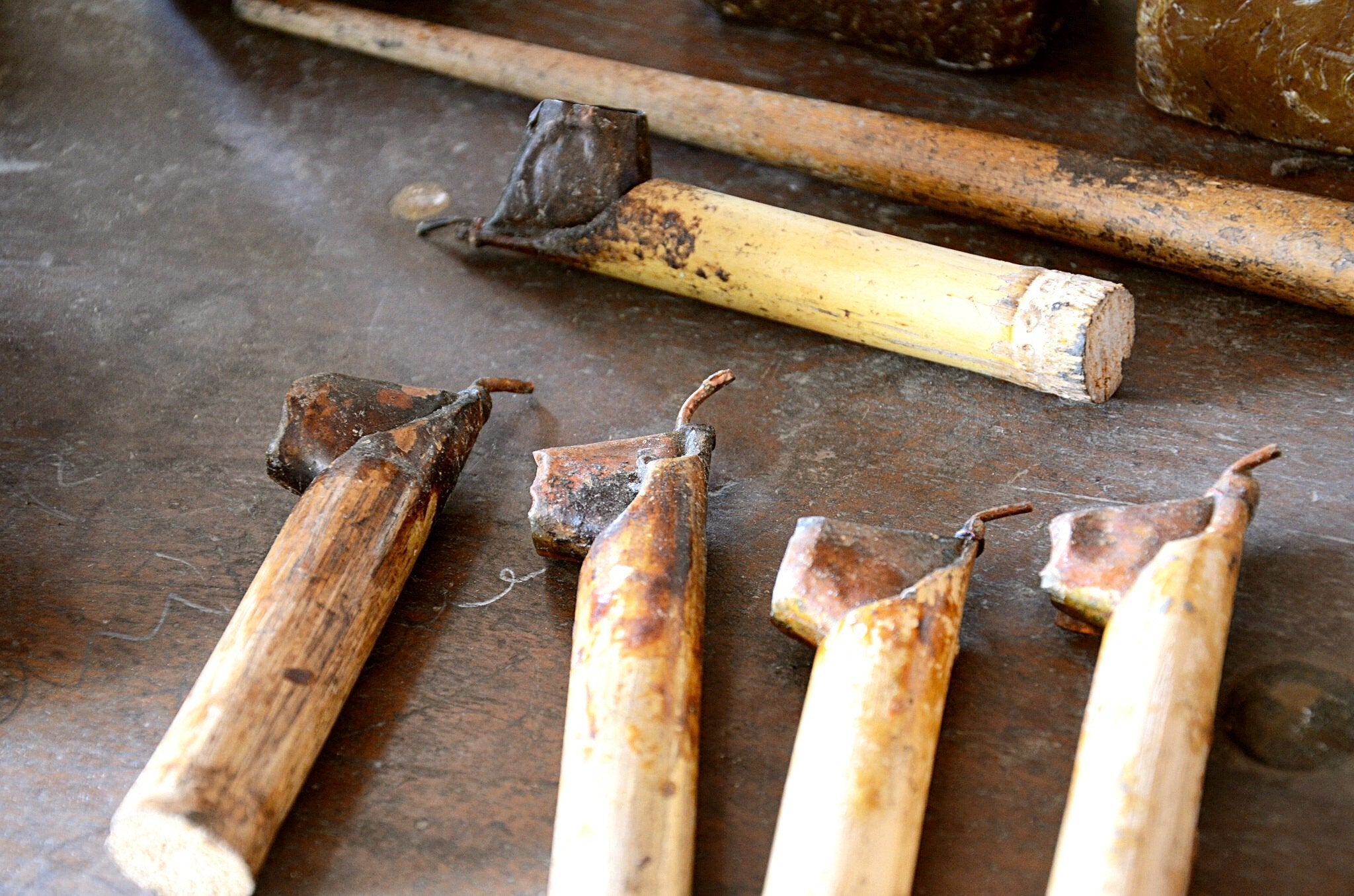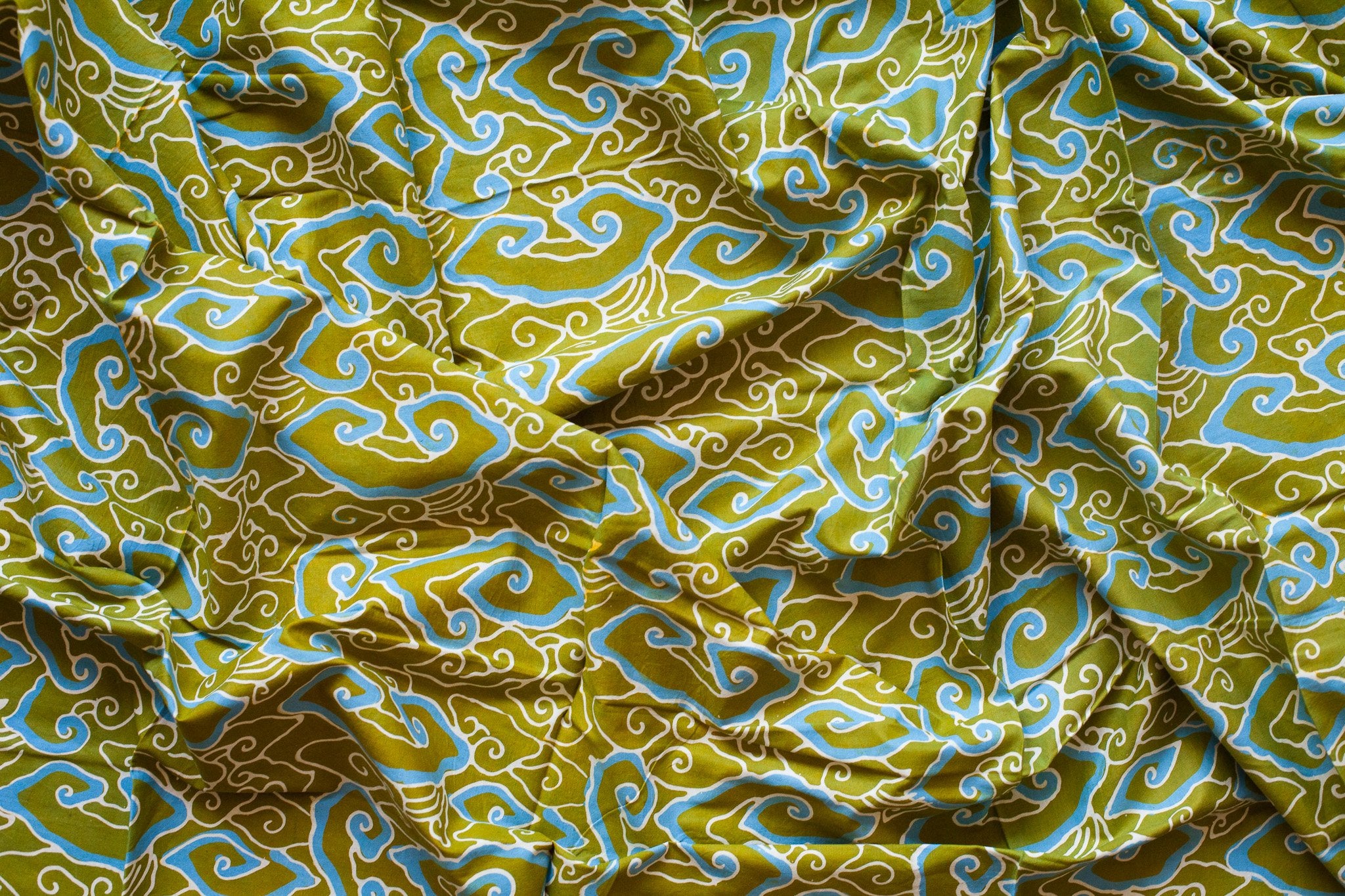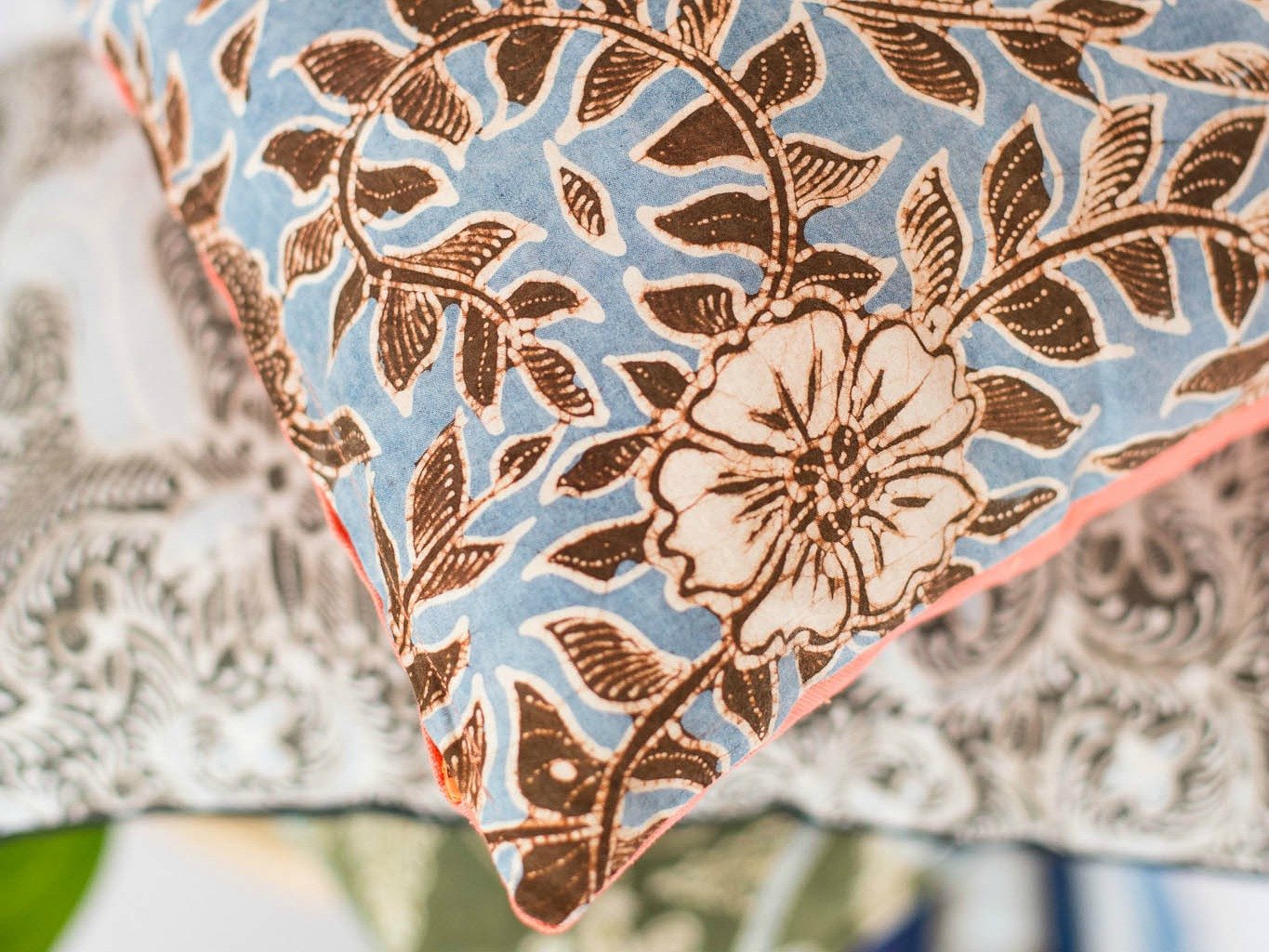Machine printed batik was introduced to the world by Europe during the industrial revolution. As the economic climate of the times improved, people were able to afford what they once could not. This drove the demand for luxury goods at that time such as jewellery, art and textile.
Since the process of handmade batik took months at a time, there was also a premium on its price. With manufacturing however, a higher yield of fabric could be produced in a shorter amount of time, at a fraction of the price. This eventually made Batik accessible.
So how do you tell between a piece of handmade batik from a machine-printed one? With the sophistication of technology today, it is trickier to differentiate between the two.
Here are our three recommended ways to tell the authenticity of a piece of batik.
1. Reversibility
Naturally dyed hand drawn batik from Central Java
The utmost special quality of handmade batik is its reversibility. Telling the front from the back can be seemingly impossible due to how the textile is waxed, dyed and treated. Wearing a handmade batik sarong inside out? We promise you no one will notice.
Reverse side. Can you tell the difference in a glance?
2. Tactile Quality
As one would expect, machines are able to print patterns to perfection. Take a look at the patterns on this piece of batik. Notice how the dots and lines are consistently uniform in size and space?
With handmade batik however, such accuracy is harder to achieve. A close inspection of this Javanese hand drawn batik below will reveal an inconsistency in the size of the elements that make up each pattern. While each pattern is drawn skilfully by an artisan, its tactile quality is unmistakable.
3. Colour
While it is usually possible to identify a handmade batik by the first two steps, an additional step to take would be to observe its colour.
Machine printed batik, like other printed fabrics are colour-fast. The vibrant, bright hues will not fade or become pale with washing.
With handmade batik however, colours fall on the spectrum of deep and rich instead of vibrant and bright. With every wash, colours will fade, eventually giving a worn and vintage look to the textile. Still beautiful, nonetheless.
Generally speaking, there is a quality to handmade batik that machines are unable to emulate. However, we would like to iterate that this post in no way wishes to portray machine print batik as lesser than traditionally made ones.
In a broad sense, the manufacturing of batik is today contrary to the efforts of keeping cottage industries alive. Looking at this from an optimistic perspective, technology has made batik accessible and well-known internationally — resulting in a steady increase in interest in the original art. Today against all odds, Indonesian batik is regarded as an
Intangible Cultural Heritage of Humanity by UNESCO.
Will this outside-in approach affect batik positively in the long run? It may still be too early to tell. With efforts by various groups to sustain the craft, our hope is that batik will continue to colour the cultural landscape of Asia in decades to come.
—
Liked this post? There are 4 distinct types of Indonesian Batik you should know. Read more about them
here.
—
References and credits:
Many thanks to the curators of Batik Museum of Yogyakarta for sharing their knowledge.
Cover photo by Allison Mickel
All other images are our own and subject to strict copyright regulations.









Comments
Hi Mawan, thank you for your comment. That is very helpful. We have never heard of malam print before. How is it made and how does it look like?
there are 3 technique for making a batics, and one of it is by “malam print”. and our call it not a batics but a fabrics that have batics motif..thankyou very much for this article so good and powerfull to giving rich infrmation about batics